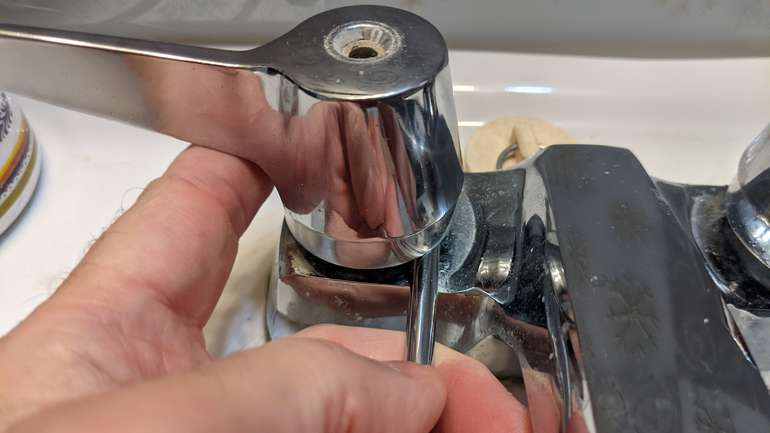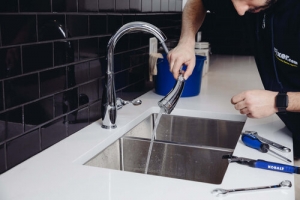Everybody may have their own individual piece of advice in relation to Leaky Faucets: Why They Happen & What to Do About Them.

Dripping faucets could look like a minor aggravation, however their effect surpasses simply the nuisance of the sound. From wasting water to sustaining unneeded monetary prices and health risks, neglecting a dripping tap can result in numerous repercussions. In this post, we'll look into why it's vital to resolve this common house problem promptly and successfully.
Waste of Water
Ecological Influence
Dripping taps contribute dramatically to water wastage. According to the Environmental Protection Agency (EPA), a solitary tap dripping at one drip per secondly can waste more than 3,000 gallons of water each year. This not just pressures water sources but additionally influences ecological communities and wildlife dependent on them.
Step-by-Step Guide to Taking Care Of a Dripping Tap
Devices Required
Before attempting to fix a dripping faucet, collect the required tools, consisting of an adjustable wrench, screwdrivers, replacement components (such as washing machines or cartridges), and plumber's tape.
Common Tap Issues and Their Solutions
Determine the type of tap and the details issue triggering the drip. Usual problems include worn-out washers, corroded valve seats, or faulty O-rings. Refer to supplier instructions or on-line tutorials for step-by-step support on repair work.
Financial Costs
Enhanced Water Costs
Beyond the environmental impact, trickling taps can pump up water costs substantially. The collected wastage gradually converts right into greater utility expenses, which could have been avoided with prompt repair services.
Possible Home Damages
Moreover, extended trickling can lead to damage to components and surface areas surrounding the faucet. Water build-up can create discoloration, corrosion, and even structural issues if left ignored, leading to added repair costs.
Health Concerns
Mold and Mold Development
The consistent visibility of wetness from a leaking faucet produces a suitable atmosphere for mold and mold development. These fungi not only endanger interior air high quality yet likewise position wellness dangers, particularly for individuals with respiratory system conditions or allergic reactions.
Waterborne Illness
Stagnant water in trickling faucets can become a breeding ground for bacteria and other microorganisms, boosting the threat of waterborne conditions. Impurities such as Legionella microorganisms grow in stationary water, possibly bring about significant ailments when consumed or inhaled.
DIY vs. Professional Repair
Advantages and disadvantages of DIY Repair
While some might try to take care of a leaking faucet themselves, do it yourself repair services include their own collection of difficulties. Without appropriate expertise and devices, DIY efforts can intensify the concern or bring about insufficient repair work, lengthening the trouble.
Advantages of Hiring a Specialist Plumber
Employing an expert plumber ensures that the underlying reason for the leaking tap is attended to properly. Plumbers possess the knowledge and devices to identify and repair tap problems effectively, conserving time and minimizing the risk of additional damage.
Ecological Obligation
Individual Payment to Conservation
Taking duty for dealing with dripping faucets aligns with broader initiatives towards water conservation and environmental sustainability. Every individual's actions collectively make a significant impact on preserving precious sources.
Sustainable Living Practices
By prioritizing prompt repair work and adopting water-saving behaviors, people contribute to lasting living methods that benefit both existing and future generations.
Preventive Measures
Normal Upkeep Tips
To prevent trickling faucets, execute routine upkeep such as cleansing aerators, checking for leaks, and replacing damaged parts without delay. Additionally, take into consideration installing water-saving gadgets or updating to much more reliable fixtures.
Relevance of Prompt Repair Works
Resolving dripping faucets as soon as they're discovered stops more water wastage and prospective damage, inevitably conserving both water and cash in the future.
Impact on Home Value
Understanding of Well-Maintained Residential Or Commercial Property
Preserving a home in good condition, consisting of attending to upkeep problems like trickling taps, improves its regarded worth and value amongst possible buyers or renters.
Impact on Resale Worth
Qualities with well-maintained plumbing components, including taps, command higher resale worths in the realty market. Addressing trickling faucets can contribute to a favorable perception during home inspections and negotiations.
Verdict
Attending to a leaking tap exceeds plain ease; it's an essential action towards conserving water, reducing monetary prices, and guarding health and wellness and home. Whether via DIY repair services or specialist assistance, taking action to repair trickling taps is a tiny yet impactful means to advertise responsible stewardship of resources and add to a healthier, more sustainable future.
How to Fix a Dripping or Leaky Faucet
A leaking faucet is one of the most common problems that homeowners encounter, but it being commonplace doesn’t make it any less annoying. The constant drip drip drip of a leaking bathtub faucet, showerhead, or sink tap can disturb your home’s serenity. Left neglected, a dripping faucet can also result in higher water bills and discoloration or mold growth in your sink or plumbing fixtures.
Fortunately, you don’t have to be a trained plumber to know how to stop a dripping faucet. With some basic tools, replacement parts, and a little patience, leaky faucet repair is a breeze. In this article, we’ll explain what causes dripping faucets and how you can fix them.
What Causes a Leaking Faucet?
Kitchen and bathroom faucets come in all manner of designs, but most involve some combination of valves, O-rings, seals, and washers. The O-ring is usually the weakest link, but any one of these pieces can wear down over time. Heat, moisture, temperature fluctuations, minerals, mold, and movement can contribute to warping and corrosion, breaking the watertight seal. This just comes with the territory of being a homeowner. Everything is always subject to wear and tear, and some component parts of your appliances and fixtures need to be replaced on occasion. At least replacement O-rings are cheap!
More rarely, dripping faucets can be a symptom of excessively high water pressure. Were this the case in your home, you would probably notice that the leak is not isolated to one faucet. Water pressure issues are harder to resolve on your own. We recommend contacting a professional plumber if you suspect your water pressure is too high.
How to Fix a Dripping Faucet
Pipe wrench or monkey wrench Allen wrench set Screwdrivers Old towel or rag Shut off the water.
Before you do anything, you need to turn off the water to keep from drenching your kitchen or bathroom. You should find a valve under the sink and against the wall. Once you’ve turned this valve, try turning the faucet on to confirm that the water source has been cut off.
If you can’t locate your local valve for the faucet you’re working on, you can always shut off the water to the house at the main valve. Of course, this will prohibit anyone from using the sinks, showers, or toilets while you’re working on the faucet that’s giving you trouble.
Plug or block the drain.
You’ll be disassembling the faucet and removing some small bits of hardware. Plug the drain with a stopper or rag to avoid the possibility of a small screw falling into your P-trap.
Take apart the faucet assembly.
There are several varieties of kitchen and bathroom faucets, each with its own manner of assembly. For detailed instructions on how to disassemble your faucet, you can refer to the fixture’s manual or contact the manufacturer. If you know whether you have a ball, disc, cartridge, or compression faucet, you can find detailed schematics online.
In general, you need to begin by removing the faucet handles. You might notice a small screw that you’ll need to remove with a screwdriver or Allen wrench. If you don’t see any visible securing hardware, it’s likely hidden under a decorative cap that can be unscrewed or popped off with flathead screwdriver.
Remove each piece methodically, consulting a schematic when necessary. Take notes or arrange the pieces in such a way to make it easier to correctly reassemble the faucet later.
Remove the cartridge.
Once you’ve removed the handles and securing hardware, you should be able to remove the valve cartridge or stem. Some cartridges will slide right out. Other faucet models will require you to loosen a nut with a pipe wrench before you can remove the valve stem.
Examine the exposed hardware.
With the cartridge or stem removed, inspect the component parts. Check the rubber O-rings for wear and tear. Also examine the seat washer for corrosion or other damage. These pieces are usually the responsible parties for a dripping faucet, but it’s worth inspecting the other component parts while you have the faucet disassembled.
Find replacement parts.
Once you’ve identified which faucet component has failed, find an identical replacement. Your local hardware store should have O-rings, seat washers, and other standard components in stock. If you have a luxury or uncommon faucet, you may have to contact the manufacturer for a replacement part.
It’s a good idea to take your old parts with you to the hardware store so you can compare them with the store’s inventory and be sure you’re purchasing the correct replacement.
Reassemble the faucet.
With your new parts in hand, reconstruct the faucet and handles. Don’t be tempted to overtighten screws or nuts. You might think this could create a better seal, but it can instead damage or bend a delicate part of the assembly and create a new problem for you.
Turn on the water and test the faucet.
The only thing left to do is test your work. Unplug the sink, turn the water back on, and try the faucet. Congratulate yourself on a job well done!
https://www.libertyhomeguard.com/how-to-fix-a-dripping-or-leaky-faucet/

As a reader on How to Fix a Dripping or Leaky Faucet , I thought sharing that piece of content was important. Do you know another individual who is excited about Water Dripping from Faucet: Why and How to Fix? Do not hesitate to share it. I take joy in your readership.